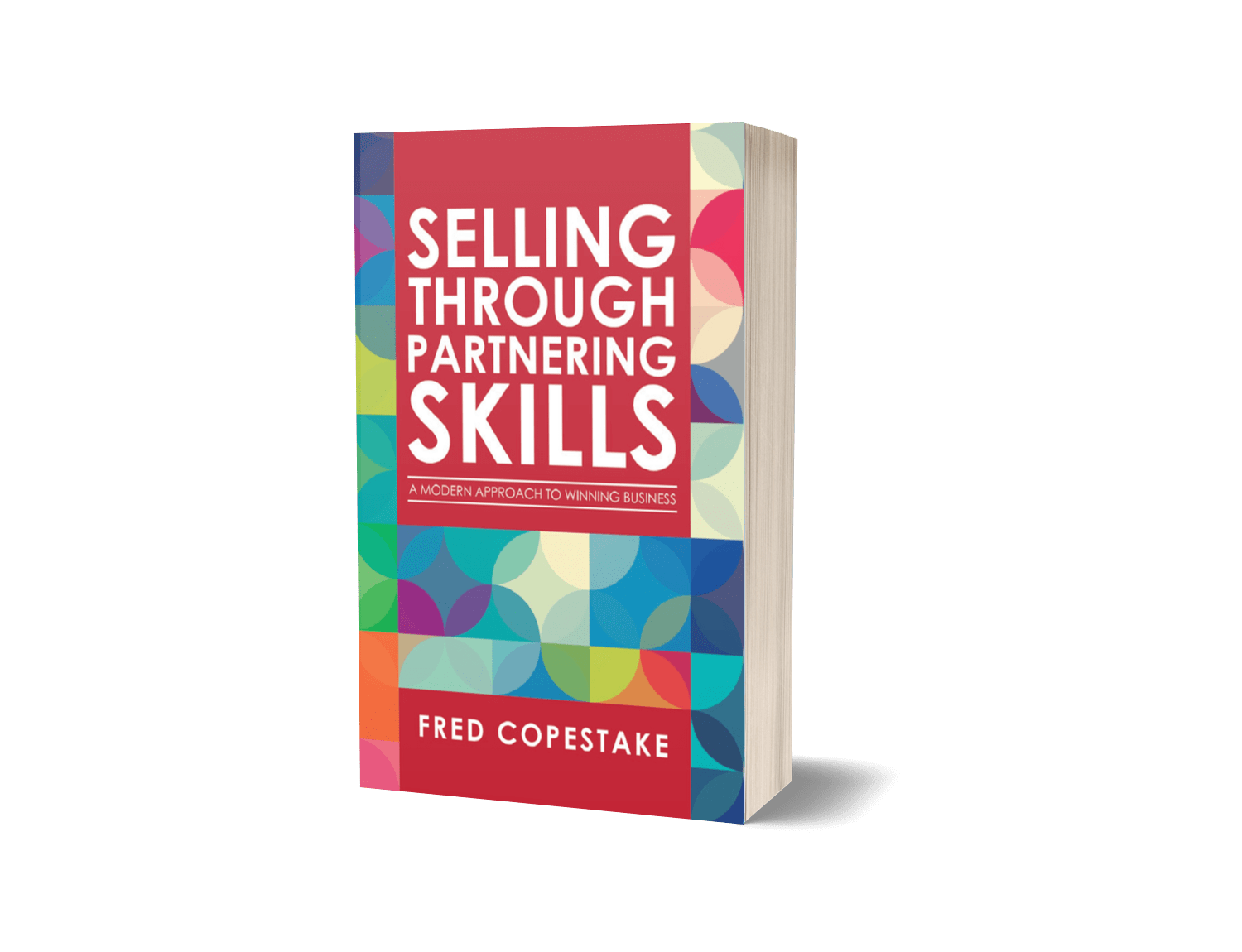Sales is Changing

The Changing World of Selling
Brave New World
I am not saying that the world of sales is dystopian, like that of Aldous Huxley’s ‘World State’, but we have seen and continue to see major advancements.
In this chapter we will look at some of those changes and define a way in which we can start to understand different ways of operating for different types of sale.
Recently I saw an article that neatly charted the shift in 20th Century sales through five generations, namely cronyism, commodity, content, consultative and collaborative selling.
Cronyism refers to building relationships and personal selling, commodity to a more price-based approach, content is about branding and benefits and consultative to do with a more customer-centric focus on needs.
Collaboration is about salespeople and customers working more closely together than ever before. It is certainly where the shift is taking us, but it is worth exploring the other generations in more depth as they also help in a modern approach to winning business
What is Selling?
Definition
Before we start considering how sales has changed and the different types of selling we see today, let’s just think about what selling actually is.
Essentially, selling is a transaction between the seller and the prospective buyer where money, or something considered to have monetary value, is exchanged for goods or services.
So, for the purpose of this book, selling can be thought of as the use of different skillsets to get to the point where both parties are in agreement and a deal can be struck. (A potentially important skillset to also consider here is negotiating, which focuses on the terms of the deal, however that goes beyond the scope of this book)
Historically speaking
Sales, or at least some kind of trading or bartering, has been around since prehistoric times; a kind of ‘swap you my mammoth hide for your fishing basket’ conversation. This is interesting but not so useful to us when considering modern-day sales, apart from the fact that even then transactions had to be based on needs or wants.
The early 1900s was a time when the sales profession suffered a poor reputation. Between 1849 and 1882, some 180,000 Chinese immigrants travelled to America to help build the intercontinental railroad. With them they brought a product – snake oil. Clark Stanley, the original snake oil salesman, saw the opportunity to peddle this product and soon ‘doctors’ and travelling salesmen began to sell their magic remedies across the United States, using a whole number of unethical and questionable practices. Sadly, this stigma is still something salespeople often endure even in today’s more professional environment.
So, let’s look at the more recent developments in our quest to achieve success from ‘Selling Through Partnering Skills’. I will move to the mid part of the 20th Century when things get really interesting for professional salespeople.
The evolution of sales
Sales techniques, and the ways of working to ensure commercial success, have developed significantly since the Second World War. This timeline above gives an overview of how different ways of working have been employed by salespeople over the years.
‘50s – Process focused (eg Attention, Interest, Desire, Action)
‘60s – Personality focused (use of psychology)
‘70s – Benefit focused (buying motivation)
‘80s – Closing focused (objection handling)
‘90s – Needs focused (consultative/solution selling)
‘00s – Value focused (generating insight)
‘10s – Needs & Value focused plus proving ‘Sales Stature’ (including use of social media)
‘20s – Collaboration focused (Selling Through Partnering Skills)
In the boom years of the 1950s, the focus was very much on having a solid methodology so that salespeople could repeat time and again the things that worked. Arguably this discipline was starting to develop in the 1920s when E.K. Strong published ‘The Psychology of Selling’ and people were starting to take notice of a certain International Business Machines (IBM) and how they operated. The idea that selling is skill that could be learned, studied, and mastered was further strengthened by the activities of Dale Carnegie (he of ‘How to Win Friends and Influence People’ fame) in his role as a business trainer.
The 1960s and its fascination with the mind saw the introduction of a more psychological approach to selling with salespeople encouraged to use new skills to understand how a customer might be thinking and adapt their style to suit. Various models including DiSC, Myers-Briggs Type Indicator (MBTI), Herrmann Brain Dominance Instrument (HBDI) and Social Styles were used to encourage salespeople with the behavioural flex required to make their interactions more amenable to customers.
‘What’s in it for me?’ was the customer’s unspoken question that sales training in the 1970’s urged salespeople to focus on. Whilst not necessarily a new concept, this back-to-basics approach helped avoid the trap of speaking solely about all the features a product or service might have by translating these into benefits a customer would enjoy from the purchase. As Harvard Business School Professor Theodore Levitt famously said: “People don’t want to buy a quarter-inch drill. They want a quarter-inch hole.”
One of the biggest innovations experienced in the world of sales was the advent of ‘consultative selling’ techniques that really came to the fore in the 1990s. This saw salespeople’s activity shift more towards the questioning and diagnostic skills required to uncover a customer’s needs. It was a distinct move away from the some of the approaches of the 1980’s that focused on the latter parts of the sale, such as ‘closing the deal’ by ‘handling objections’. Using questions in such a considered and structured way is known as both Consultative and Solution Selling
In the 2000s those in a sales role were also encouraged to concentrate on how they could ‘add value’ for their customers. Using deeper ‘contextual’ or ‘insightful’ questions and considering the broader business benefits that can be delivered and designed into a wider solution are the principle means to achieve this.
For the 2010’s the consultative/adding value approach remained highly relevant, though anyone with a business development responsibility also needed to have an awareness of what was then referred to as ‘Web 2.0’ technology – particularly that concerning the use of social media. Newer means of communicating and sharing information played, and indeed continues to play, an increasingly-important part in how sales dialogue is undertaken. Customers are more informed, and salespeople are more likely to enter the process later in the buying cycle than ever before.
This evolution of sales into the 2020s sees an increasing shift towards a more collaborative approach to working with customers. It involves creating more of a partnership between the salesperson and customer, that makes sense for both parties over the longer term. By partnering with a salesperson, and their organisation, the customer is likely to enjoy greater benefits since the business relationship is maintained and a greater opportunity to create value evolves. It means that a salesperson should be equipped with right tools, techniques and perhaps most importantly mindset to achieve this and continued success – hence ‘Selling Through Partnering Skills’
Categorising Sales Types
Making sense of the modern sales environment
So, salespeople of today have inherited many ways of working from their ancestors which can be mixed together in the best way to adopt a more collaborative approach. Everyone can develop their own modus operandi to become closer to their customers and everyone is happy. As the UK insurance advert star Aleksandr the Meerkat would say ‘Simples’.
But it’s not. Modern-day selling is anything but simple. Today’s sales arena has more levels of complexity than probably ever before. Indeed, if we look at the military VUCA model, we could argue that all of the elements of volatility, uncertainty, complexity and ambiguity are at play in any given marketplace to some degree or another. (Sales teams can actually use this model as a way to structure their thinking in planning sessions to great effect)
We need to try to simplify how we consider approaches to sales that use a collaborative ethos. For this I will use a model based on ‘value’ and ‘complexity’ that will help you as a reader work out which type of sale you are closest to and so how you can use appropriate tools and techniques to tailor your approach.
Value and Complexity
Just as a successful salesperson looks at things from different perspectives so the value axis takes into consideration value both to the salesperson and to the customer.
Value to the salesperson is perhaps easier to define as this is most likely relate to the size of the deal, the revenue or lifetime worth of the customer. It is probably thought of in monetary terms.
Value to the customer is harder to define, in fact much of this book addresses just that; as this is a key challenge for salespeople. For the purpose of this model let’s think of this broadly as the benefit they enjoy as a result of working together. It might be that a direct link can be made to increased revenues though it may be that it is wiser to focus on ‘business outcomes’.
An outcome is basically the result, or the consequence, of something and with our sales hat on we can say that it is doing something related to our product, service or solution. The business bit is the impact it has on the customer. These impacts can be wide and varied depending on industry and could include increased retention rates, improved acquisition rates, increased revenue, reduced costs, process improvements or efficiencies, culture change, increased profitability, increased word of mouth, increased conversion, and more upsell and cross-sell opportunities.
Shades of grey
Look up shades of grey and a whole host of different ones are listed including such exotically named versions as Silver, Spanish, Davy’s, Jet, Xanadu, Battleship, Marengo and Rocket. They vary depending on their make-up (achromatic in which the red, green, and blue colours are exactly equal and chromatic in which they are not, but are close to each other, which is what makes it a shade of grey)
It is like this in sales. We are essentially talking about the same thing – selling – but the make-up of the sales approach can be slightly different. The types identified are to help work out where on the scale your sales sit with the titles meant as indicators just as with Achromatic, Off, Cool and Warm in the grey colour spectrum.
The types we will consider are Classic, Consultative, Value Based and Enterprise selling…
